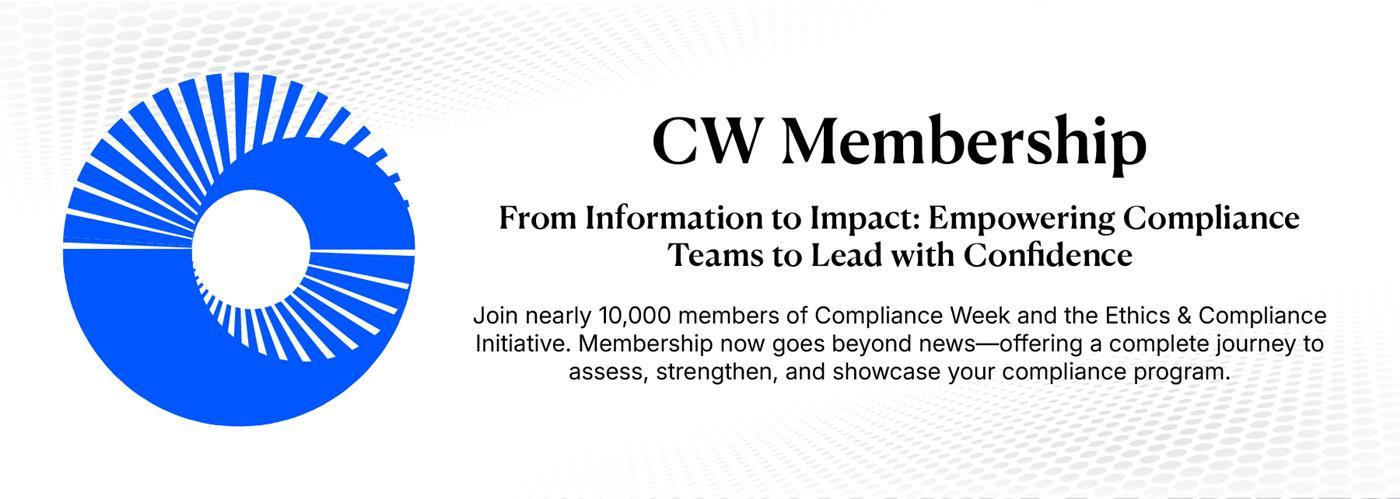- Home
-
News
- Back to parent navigation item
- News
- National Compliance Officer Day 2025
- Accounting & Auditing
- AI
- AML
- Anti-Bribery
- Best Practices
- Boards & Shareholders
- Cryptocurrency and Digital Assets
- Culture
- ESG/Social Responsibility
- Ethics & Culture
- Europe
- Financial Services
- Internal Controls
- Regulatory Enforcement
- Regulatory Policy
- Risk Management
- Sanctions
- Surveys & Benchmarking
- Supply Chain
- Third Party Risk
- Whistleblowers
- Opinion
- Benchmarking
- Certification
- Events
- Research
- Awards
-
CW Connect
- Back to parent navigation item
- CW Connect
- Sign In
- Apply
- Membership
TPRM Summit: How to successfully implement data analytics
By  Aly McDevitt2022-12-12T17:20:00
Aly McDevitt2022-12-12T17:20:00

The value-add of leveraging data analytics to mitigate third-party risk is, at this point, common knowledge. Access to real-time data updates and adverse media alerts as well as a single source of truth up and down the chain of command are just a few advantages. Many technology solutions are now equipped with prebuilt integrations, artificial intelligence, and natural language processing.
Still, a tool is a tool. You must know how to wield it to make good use of it—and avoid injury.
A panel of experts at Compliance Week’s virtual Third-Party Risk Management and Oversight Summit last week offered compliance practitioners a how-to primer on just that.
THIS IS MEMBERS-ONLY CONTENT
You are not logged in and do not have access to members-only content.
If you are already a registered user or a member, SIGN IN now.
Related articles
-
 Premium
PremiumGoogle, Uber CCOs share approaches to data analytics
2023-03-07T13:30:00Z By Jaclyn Jaeger
The chief compliance officers of Google and Uber offer insight into how their data analytics compliance programs have evolved amid enhanced scrutiny on use of technology from the Department of Justice.
-
 Premium
PremiumSurvey: Cybersecurity, regulatory risks lead TPRM priorities in 2023
2023-02-10T14:00:00Z By Aaron Nicodemus
Respondents to a survey from Compliance Week and Dun & Bradstreet overwhelmingly indicated cybersecurity to be the most important compliance-related area affecting third-party risk management in the new year, though fraud and other risks should still be on their radar.
-
 Premium
PremiumExperts: New AI laws pose risk of overlap with data protection mandates
2023-02-02T17:31:00Z By Neil Hodge
Companies are at serious risk of facing multiple fines for the same offense under different sets of legislation if the artificial intelligence technologies they employ misuse personal data or cause harm to consumers, according to legal experts.
More from Risk Management
-
 Article
ArticleRapid regulatory change requires investment in compliance processes in financial services firms
2025-11-20T21:55:00Z By Ruth Prickett
Geopolitical instability and a general focus on increasing growth and productivity by governments worldwide are causing a slew of regulatory changes in the financial services sector. But most firms are failing to identify potential compliance changes early enough to make meaningful decisions.
-
 Article
ArticleCompliance should protect firms from AI-washing investigations and insurance claims
2025-11-05T20:28:00Z By Ruth Prickett
Insurance firms are warning that AI-washing could trigger a slew of cases against directors, and are adjusting their directors’ and officers’ liability premiums accordingly. With regulators cracking down on AI-washing, compliance could be a crucial line of defense and save companies on their insurance costs.
-
 News Brief
News BriefAI hallucinations in Deloitte Australia report highlight important role for compliance
2025-10-24T18:57:00Z By Ruth Prickett
“Hallucinatory” citations and errors in an AI-assisted report produced by Deloitte for the Australian government should be a wake-up call for compliance officers about the risks of placing too much trust in AI.
- Terms and Conditions
- Privacy Policy
- Do Not Sell My Info
- © 2025 Compliance Week
Site powered by Webvision Cloud






